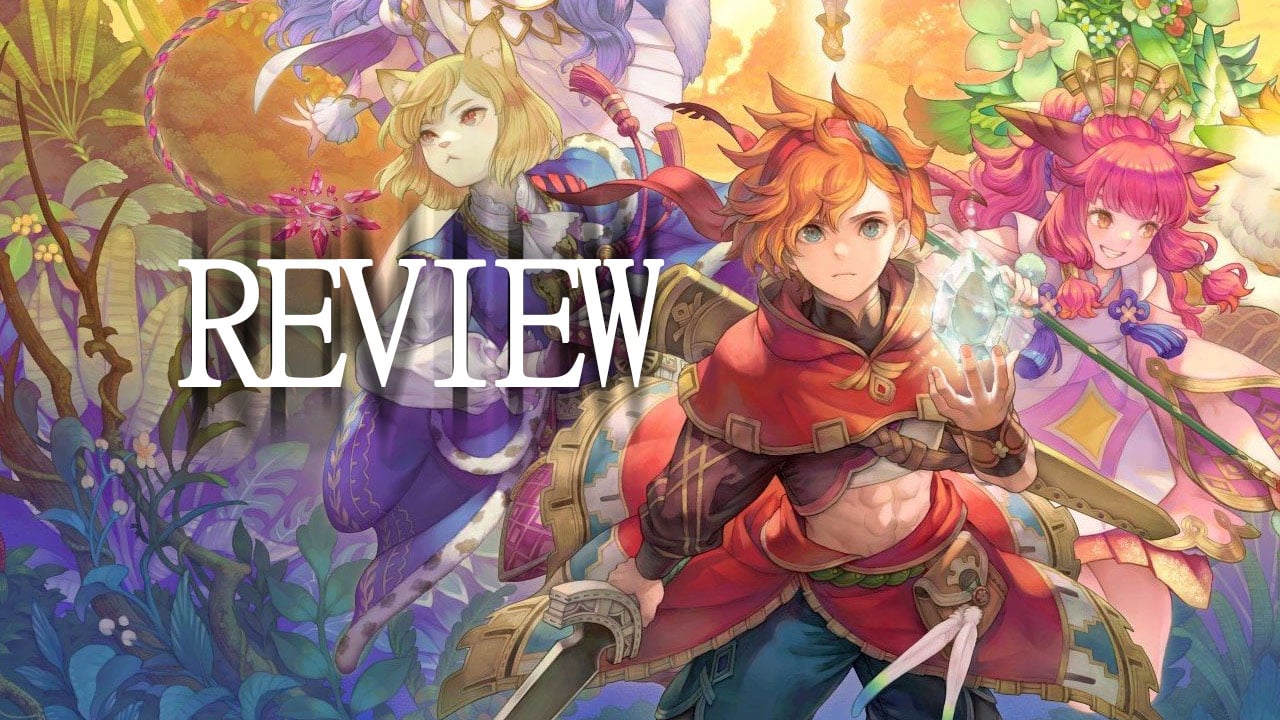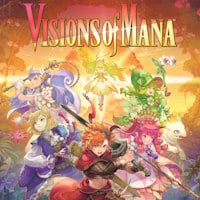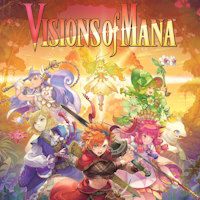Visions of Mana Review: A Sacrifice for Nostalgia
17 years after the release of the last Mana series game, Visions of Mana hopes to breathe new life into the series. Does it have what it takes to restore the balance of story and combat?
The review is based on the PC version. It's also relevant to PS4, PS5, XSX version(s).

Decades ago, the Mana series was one of the more prominent JRPGs you would hear mentioned with the likes of Final Fantasy and Dragon Quest. Cute mascots, magic spells, and likeable characters made up the core of the series that spanned several systems starting with the Game Boy. Over the years, however, it has seemingly fallen in the shadows of more modern titles so it’s both surprising and refreshing to see a new main-entry game nearly 17 years since its last.
- An engaging combat system that keeps getting better the more you play
- Inventive boss battles and combat situations
- Massive worlds to explore
- Its story is bland and too predictable to hold your interest throughout the game’s 30-some hours
- Characters are one-dimensional and not enough time is spent on them
- Side quests are forgettable and feel like filler
- Exploration and platforming can feel clunky and restrictive
When you look at it as a whole, Visions of Mana is like taking a trip back in time when JRPGs were simple, predictable, and featured the kinds of stories you simply enjoyed seeing through until the end. Take a closer look, however, and you’ll realize that while the game feels relaxing and nostalgic, it also feels almost too simple for its own good. It has its shining moments, of course, but don’t expect to be blown away by this lukewarm revival.
Predictable Storytelling
Visions of Mana follows the story of Val, a Soul Guard entrusted to protect the appointed Alms of various elements and guide them on their pilgrimage to the Mana Tree where they are to be sacrificed in order to restore and maintain balance to their world. The game begins with a prologue few years in the past and shows the disastrous effect of failing to complete this holy ritual almost to hint at some conflict in the story and make you wonder if your characters will also defect and choose to go rogue. Let’s just say the plot is as predictable as they come.
Hinna, the Alm of Fire and Val’s love interest, is honored to be chosen as the Alm as are the other characters in your party you eventually find. Her almost naive way of thinking instantly reminded me of Yuna from Final Fantasy X when she was chosen for her sacrificial pilgrimage, but the difference was that she actually grew and matured as a character throughout the course of the story. Here, however, your characters are flat and one-dimensional.
It’s a shame, too, because you will meet different Alms on the course of your pilgrimage, each one having a unique personality and attack style in battle. Morley, for instance, basically caused his entire village to be destroyed so he lives with an immense guilt he needs to overcome when you first meet him. You get to help him, of course, and learn a bit about his past, but that’s pretty much it when it comes to Morley’s character development. It’s a missed opportunity, or rather, opportunities considering how likeable everyone is.
Despite how colorful and idealistic the game often feels, the story is actually quite dark when you start examining it. In fact, idealism is its downfall as it often negates some of the more serious moments in the narrative and makes you wonder if its writers just want their characters to always be happy and not dive deeper into their emotions. You would think that a game that is dealing with the potential sacrifice of human life would spend more time going through the conflicting thoughts one must feel upon realizing their life will soon end. Instead, you simply get happy music that accompanies you on your happy journey to the Mana Tree.
Colorful Worlds with Bland Side Quests
Visually, Visions of Mana is rich and dazzling, and truly draws you into its detailed setting. From forests to deserts to snowy mountains, its world is what you would expect to see in an JRPG and doesn’t disappoint. You will visit various towns along your journey, but to get to them you’ll need to cross giant semi open-world areas that feature enemies, collectibles, and side quests. Some of these areas are massive with lots of treasures to find, but others are pretty barren and only have monsters for you to endlessly fight for experience. Maps also have invisible walls that limit your exploration while towns restrict your movement making it harder to fully explore them all.
Dotted in its towns and fields are characters that provide you with side quests to complete, but these are by far one of the weaker elements of exploration. These quests feel like an afterthought as you will mainly be fetching items for most of these characters and bringing them back for gold or useable items. There is no rewarding story for completing these quests as most of them are simply forgettable.
Fighting in Style
What truly makes the game fun and exciting is its active combat system, which gets more complex and unlocks more options as you make your way through the story and collect Elemental Vessels. These provide your characters with a special item they can use in battle such as a water jug that traps enemies in bubbles, a flaming rocket that rams and burns enemies, or a boomerang that levitates them in the air leaving them open to attack. Equipping them gives you a new toy to play with, but doing so also lets your character change their class, giving them access to unique abilities and actions.
The impressive element in this class system is that each character becomes a class unique to them when equipped with an Elemental Vessel. Val, for example, becomes a tank when you give him the Luna Globe, but Morley becomes a rogue-like ninja. The more you explore the world and collect Elemental Points, the more you can unlock new moves and abilities for each class letting you then use those moves when you have other classes equipped. This system not only lets you experiment with what classes work for your play style, but they also give you various ways to approach an enemy or a boss and see which class makes sense for that battle.
At first, most battles will seem like easy hack-and-slash bouts you can finish in seconds, but later ones require a bit of smart planning and preparation. You also get access to a Class Strike attack that charges up with every hit you make so knowing when to use this devastating move can really make a difference. Even with various difficulty settings, however, the game doesn’t feel too hard but provides you with plenty of ways to challenge yourself and create a party that works in your favor. There are formidable enemies you can hunt down, for example, that drop special items that unlock even more abilities you can equip for yourself. Suffice it to say, these battles are much more rewarding than the frivolous fetch quests its side missions provide.
During a fight, the game controls the other two characters, and while you can select presets that determine how often they attack or focus on certain abilities, the AI sometimes get flustered when it comes to some of the more inventive boss encounters. My healer, for example, did not always heal me when I was close to dying which forced me to control her, do a healing spell on myself, and then switch back to my main character. Some battles do require you to switch back and forth between different characters because the AI has a hard time keeping up.
Final Thoughts
Playing Visions of Mana almost feels like playing an old JRPG. Its setting was inspired by the Super Nintendo’s Secret of Mana, after all, and you can really feel it when making your way through its wondrous world. However, too much reliance on classic elements also means that the game’s story feels a little too straightforward and as if it, too, is being sacrificed for the sake of reviving the series.
If Visions of Mana spent as much time and energy as it did in its battles into its narrative, we would have gotten a very different game. Instead, the game seems off-balance but definitely has the potential to be a fun experience if you solely focus on the battles and not on its plot. Don’t get me wrong—there are moments in the game where the story introduces some action elements that make you feel like you are getting somewhere, but these moments are overshadowed by the rest of the story’s rather bland narrative.
The game was reviewed on PC with a Xbox One controller.
Visions of Mana
Visions of Mana Review: A Sacrifice for Nostalgia
17 years after the release of the last Mana series game, Visions of Mana hopes to breathe new life into the series. Does it have what it takes to restore the balance of story and combat?








